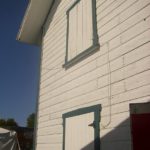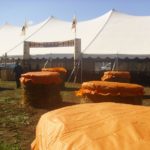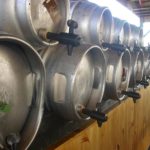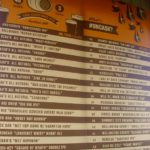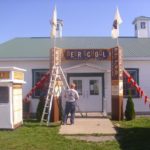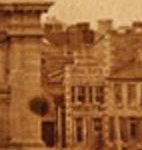Category: Ontario
What Matters On Saturday At The Beaus Oktoberfest
Ron was on fire. Sure, I had to threaten the audience before to ensure that they had to listen if they knew what was good for them. But they did listen. And it was good for them. After about seventeen genial interjections the lady in the back told me to shut up. That was excellent. Then we were done and retired to the room at the back, opened the fridge and found the five pounds of Quebec blue cheese that the previous panel had left behind. That was some friggin’ good cheese. Tomorrow? Pub games. Spent a happy half hour this morning buying and then sanding junks of wood for an Aunt Sally set for the noon. That’ll be cool. Knocking down a stick. By throwing a stick. Excellent.
My Place Of Work About 160 Years Ago
My place of work in the 1850s when the waters lapped up to the stone wall of the market battery. As in a battery of cannon that protected the market. Because City Hall was built in the 1840s on part of the market square that he been there for decades before that. If you click on the picture you will see more detail. Like these bits:
To the left, you see the sign for “A & D Shaw” but I am not sure why there was a sign like that on the front of a government building. Were there businesses in the building, too? In the middle there is the detail to the left, a week glimpse up Market Street. To the right there is the same thing up Brock. The Market Street buildings are still there but there is no awning or porch on the south side as there was back then. An one of the buildings on Brock could be Sipps or Casa Domenico.
Ottawa Brew Pub Reviewed… But Not Its Beer
A rather odd review of a brew pub in the Ottawa Citizen whose only value from a brew point of view is the brief introductory comments on the state of the competition in town:
How to tell apart the national capital region’s numerous and newish beer-themed eateries? Lord knows I’ve struggled. Here’s my breakdown, peppered with superlatives. Beer Brothers Bistro serves the best food. (That the venue doesn’t brew its own beer doesn’t disqualify it.) Les Brasseurs du Temps in Gatineau’s Hull sector makes the best beer. Mill St. Brew Pub has the best location. The one with the most locations — five — is the Clock Tower Brew Pub chain. And Big Rig Kitchen and Brewery, which opened in June with Ottawa Senators defenceman Chris “Big Rig” Phillips as a partner, is the sportiest and most celebrity-driven.
This is something of a good precedent, an actual attempt at comparison. It is at the outset of a review of the last one, Big Rig and does a decent job getting to the point. When, as with this article, the general media present information about beer and pubs it can go one of two ways. It can be clueless which is dangerous when the uninformed writers idea of what is great is not all that great. Or it can be more honest and direct than a beer media insider already known in a relatively small circle players. Unlike the first, the danger arises from the hedging of a direct concern, the use of oblique critique to avoid stating a harsh reality. After the introduction above, however, this review takes off on a third route. It does not mention the beer. I read the article a few more times just to make sure. The space is declared something of a large sports swag echo-ridden cube. The steak was the thinnest ever encountered. We learn that you can view the brewing equipment and that the customers are “hundreds of boisterous, beer-fuelled diners” but not a word on the beer itself.
What do you do with this sort of review that only references the key product of an establishment once it ends up as content of the patrons’ blood streams? I have seen beer being treated beneath contempt before but I am not sure I have seen it treated beneath all observation.
Ontario: An Early Reference To The Kingston Brewery
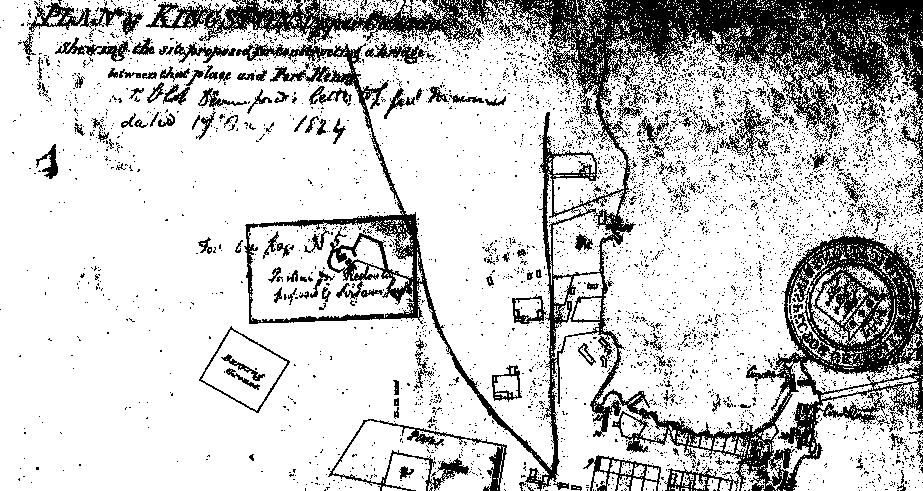 The funny thing about Ontario is it started as a part of Quebec. Until the division of Upper and Lower Canada in 1791, this was all the one unified colony that Britain took from France in the conquest of 1760. Settlers started moving in 1783 first from central New York in the first direct Loyalist wave, then over the rest of the decade from the eastern US seacoast as the losers of the Revolution filtered their way around up from New York, Nova Scotia and then down the St. Lawrence. An oblique reference in a land document for a Lieut. Mackay from 1794 gives an interesting hint as to the development of brewing here in Kingston, the commercial center of this new colony:
The funny thing about Ontario is it started as a part of Quebec. Until the division of Upper and Lower Canada in 1791, this was all the one unified colony that Britain took from France in the conquest of 1760. Settlers started moving in 1783 first from central New York in the first direct Loyalist wave, then over the rest of the decade from the eastern US seacoast as the losers of the Revolution filtered their way around up from New York, Nova Scotia and then down the St. Lawrence. An oblique reference in a land document for a Lieut. Mackay from 1794 gives an interesting hint as to the development of brewing here in Kingston, the commercial center of this new colony:
On May 27, 1794, a petition had been presented in Council on his behalf for “a Piece of Land about the usual Size of a Town Lot, situated on the West side of a Lot lately laid out for the Kingston Brewery, to be bounded on the North by the said Brewery on the East by a small run of Water, on the South by the Common, & on the West by the top Bank…”
The passage is from The Parish Register of Kingston Upper Canada 1785-1811, an online resource that also confirms that by 1797 it was managed by one John Darnley. That is it above shown on a map of my town from 1824. It is also shown on a map from 1865 and later additions are still there – as the 2003 photo at this post shows. There was earlier brewing in the colony but likely tied to taverns like Finkle’s in nearby Bath. Steve Gates, our comment leaver and author of the excellent book The Breweries of Kingston & The St. Lawrence Valley pegs the building of the brewery in 1793 by merchant John Forsyth but it is John’s brother Joseph who is more of the man about Kingston in the 1790s. But, as a garrison town and a depot supplying deep into the continent from the main colonial centre of Montreal, it is entirely likely that their Kingston business affairs overlapped repeatedly.
Creation of the brewery reflected some level of certainty after years of difficulty in ensuring the grain crops could supply the expanding colonial population. A 1796 letter noted in Preston’s Kingston Before The War of 1812 even speaks of the continuing infestation of Hessian Fly affecting the area. Building a brewery spoke to an expectation of peace.
Garden 2012: The Eating Has Begun
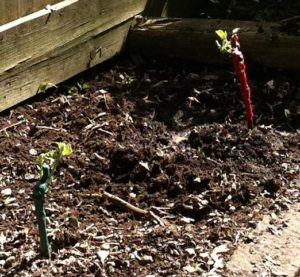 Bok Choi is now my favorite garden crop. I had no idea it grew this quickly. While we still wait for lettuces to get to a point where thinnings could be added to a salad, the bok choi is ten times the size. Peas are flowering. I need more carrot seed. More space, too. I want to dig up the lawn and ram potatoes in its place.
Bok Choi is now my favorite garden crop. I had no idea it grew this quickly. While we still wait for lettuces to get to a point where thinnings could be added to a salad, the bok choi is ten times the size. Peas are flowering. I need more carrot seed. More space, too. I want to dig up the lawn and ram potatoes in its place.
The grapes are all in and buds are popping quite nicely. There are 29 vines on the lot now. Viognier, Cabernet Franc, Concord and Pinot Noir. I want more. I am having a hard look at the front lawn for next year. It can’t all be onions and squash, can it?
Ontario: Finally A Beer Fan Video I Like
Remember a few years ago when there were all those needy videos about “I Am Craft Beer” on YouTube and everywhere else that went on and on as if all brewers were demi-gods, all good beer fans were long lost friends and lovers and craft beer was what would fuel that rocket ship that was going to get us all to Mars? I know. It’s a bit embarrassing when you look back at it, right?
Well, I have to say that this new vid-ad-eo for Ontario Craft Brewers is a far better take. No phoney hero worship or weird cult-like claims to community. It’s just about the first time you had a good beer. Sure there is that waaay over caffeinated editing but the theme is actually about something that is real – the recollection of your first good beer… the one that you can at least recall, that is. The most fun for me is that it was filmed at the Brewers Plate 2012 that I attended in Toronto back in April and features the folk I hung out with. But not Jordan. I don’t know if he was rude or all mumbly when he was asked the question on camera but he didn’t make the final cut. Josh did. Clow did. And at 1:24 you do get a semi-slo-mo Mr. B. drinking shot. That is one of the ages. They even cut the clip of him before the beer shot out his nose, too, so that is good.
Most of all you get folk who know, work with or just like good beer in action shots displaying their fondness of good beer. From goofy to earnest. No scripts. No great plan. Just the thoughts of people at the gig invited to say something for posterity. I like it.
Ontario: Robust Porter, Great Lakes, Etobicoke
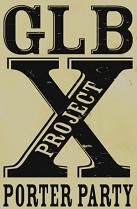 I was handed this beer at last week‘s beer event. I just would like to mention that this is one of the best Ontario-made beers I have ever had. Part of their Project X series, it’s on limited release and, sadly, limited production. Too bad. Thick sheeting mocha cream head over deep dark ale. Thick aroma, too. Cocoa and mint. Pumpernickel and cream. If I had thought of a beer future back in the 90s, it might have been this. Before hop mania. Before sour. When malt and roast reigned. This has it. Masses of dark malt with dry roast coffee as well as sticky date and raisin notes all carried along with a rich light sour even yogurty yeastiness. It is heavy. In the best sense. As heavy as you wished your coffee in the morning could be.
I was handed this beer at last week‘s beer event. I just would like to mention that this is one of the best Ontario-made beers I have ever had. Part of their Project X series, it’s on limited release and, sadly, limited production. Too bad. Thick sheeting mocha cream head over deep dark ale. Thick aroma, too. Cocoa and mint. Pumpernickel and cream. If I had thought of a beer future back in the 90s, it might have been this. Before hop mania. Before sour. When malt and roast reigned. This has it. Masses of dark malt with dry roast coffee as well as sticky date and raisin notes all carried along with a rich light sour even yogurty yeastiness. It is heavy. In the best sense. As heavy as you wished your coffee in the morning could be.
I think I recall Troy telling me as he passed the bottle that this was named after Burt Reynolds. Can’t recall why.
Brewers’ Plate 2012 And My Happy Schooling
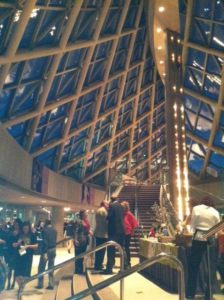 What a pleasant Wednesday. I ate. I sipped. I asked myself a lot about how people in downtown Toronto spend their Wednesday evenings. I did not think I got swept away in pairing mania but, and it is a subtle but so bear with me, there were many wonderful combinations to be found.
What a pleasant Wednesday. I ate. I sipped. I asked myself a lot about how people in downtown Toronto spend their Wednesday evenings. I did not think I got swept away in pairing mania but, and it is a subtle but so bear with me, there were many wonderful combinations to be found.
For example, Beau’s Mates with Dates and the cheese made from water buffalo milk from Montefort Dairy was a really interesting side by side but it was not one of the proposed pairings on offer. Similarly, a deftly tucked away bottle of Ten Bitter Years from Black Oak went very well with the dessert crepe being given away in a booth but that was not the beer on offer because the crepe had Ontario black walnuts. The chef and I talked about the weirdness of the texture of the crepe and nuts with a very bombish IPA. But we agreed that there was a twigginess in the hops of the beer that worked with the walnuts which tasted like you face would after an hour of chainsawing hardwood.
So did I pair? Probably. Was the event a good one. It really was. I am going to just post this now but add some more thoughts as my day’s class on contract drafting proceeds. Unless it is riveting. Which it could be. You never know.
Ontario’s LCBO Has Nation Based Beer Quota?
Interesting comment on Ontario’s LCBO, the province’s sole wholesale import beer buyer. The comment is from an Estonian supplier newly selling its beer into this my local marketplace:
In an April 11 statement, A. Le Coq said its product should arrive on store shelves in the province’s major cities this week. The brewery’s director Tarmo Noop said that entering the Canadian market was a long and difficult process. “In Canada the government puts very strict controls on alcohol sales and in connection with that, very tough regulations are in effect for both importers and imported goods,” he said. As an example, Noop said that only one brand of Estonian beer could be sold on the market at one time. The company also had to redesign its packaging to meet local regulations.
Really? Is this just for Estonia or do all nations have to send us only a few of their brews? How many German, French or Italian beers can be on the shelf at one time? Where is the chart of these national quota levels and who came up with it?




